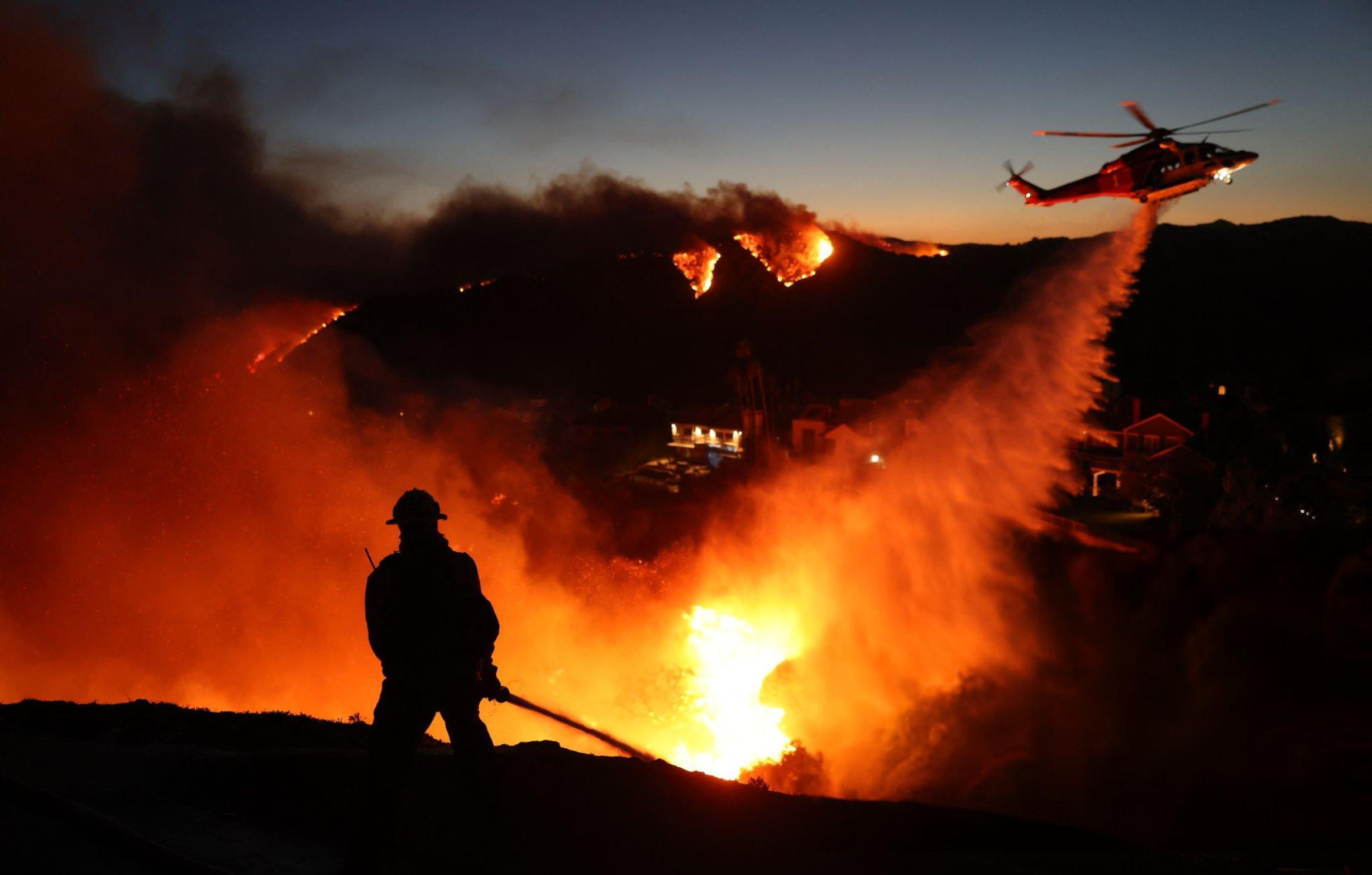Southern California is once again on high alert as powerful winds stirred up dangerous conditions for wildfires on Tuesday, triggering at least two new blazes across the region. The National Weather Service has issued a warning for the area, as gusts are expected to peak at up to 100 mph (160 kph) in mountainous areas and 70 mph (113 kph) along the coast, creating what officials describe as a “particularly dangerous situation” for much of Southern California. These extreme conditions, including low humidity levels, are expected to persist through Tuesday morning. The volatile weather is compounding the risks faced by firefighters who are already battling two major wildfires that have been burning for weeks in Los Angeles County. Fire crews have been working tirelessly to contain the flames that are threatening homes and wildlife.
New Fires Erupt Amid Intense Winds
On Tuesday, wind speeds reached dangerous levels, with gusts ranging from 35 mph (56 kph) along the coast to 63 mph (101 kph) in the mountain regions. The gusty conditions played a significant role in fueling new fires, particularly in San Diego County, where at least two new fires broke out. One of the fires, named the Lilac Fire, had already burned approximately 50 acres (20 hectares) and forced authorities to issue evacuation orders for the surrounding areas. As the fire spread rapidly, structures were threatened, and the California Department of Forestry and Fire Protection (CAL FIRE) worked to manage the situation. Fortunately, firefighters have made some progress on the Pala Fire, which was later reported as being contained. In Los Angeles, fire crews quickly extinguished a small brush fire south of the Griffith Observatory, and a suspect was taken into custody in connection with the blaze. Another brush fire broke out along the I-405 in Granada Hills, briefly closing the northbound lanes before being quickly suppressed. Further south in Poway, San Diego County, another fire ignited, sparking concerns across the region. Firefighters managed to stop its forward progress, but conditions remain volatile as winds continue to drive the spread of fire. As wildfires ravage the region, local officials and residents remain on edge. Authorities are doing everything they can to contain these flames while urging residents to stay vigilant and be prepared for further evacuations. “We are facing a particularly dangerous fire season,” said Gov. Gavin Newsom. “The devastation these fires cause underscores the importance of strong partnerships between local, state, and federal agencies to protect our communities.” In Los Angeles, Vice President Kamala Harris, alongside her husband Doug Emhoff, visited with firefighters and volunteers in the aftermath of the Eaton Fire in Altadena. The Vice President, who has been vocal about the need for improved wildfire response, expressed her gratitude to those on the front lines and reaffirmed the importance of ongoing federal assistance in combating the fires. Former President Donald Trump, who has also been critical of wildfire response in the past, is expected to travel to Los Angeles this Friday to meet with local officials and assess the situation.
The Path Forward
Firefighters are making significant progress, but much work remains to be done as high winds and dry conditions continue to fuel the fires. Officials are predicting that gusty winds will return later in the week, on Thursday, further complicating the fight against the blazes. While a small amount of rain is expected over the weekend, it will likely not be enough to halt the fires entirely. Residents are being urged to take proactive steps to protect their homes and loved ones. Authorities have advised against mowing lawns, which can spark fires, and have urged people to review evacuation plans and keep emergency kits ready. The public is also encouraged to stay alert, report any signs of new fires immediately, and assist authorities in their efforts to prevent further devastation.
